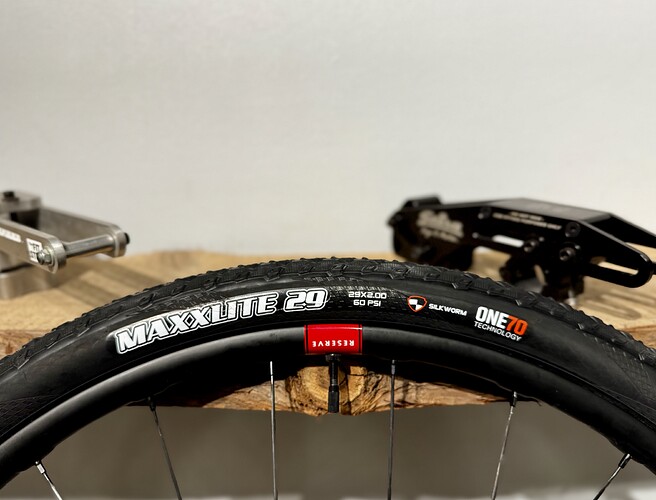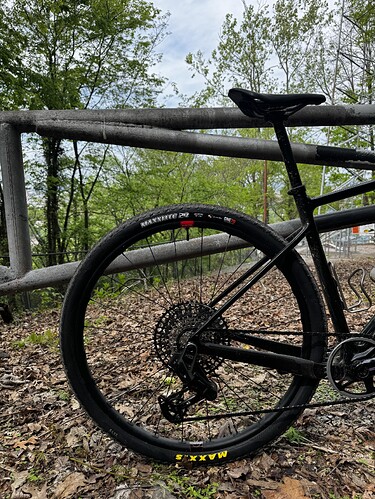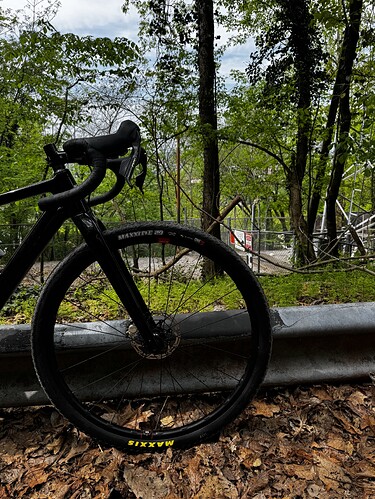I’m convinced the tires Maxxis supplies their pro riders with are not the same tires available to us consumers. Every Maxxis tire I’ve ever put on my MTB has felt incredibly slow, even tires like the Rekon Race or Aspen.
Ha! I was thinking, I’m pretty sure my wife’s e-bike came with 700x50 Ramblers. Got home and checked and sure enough, it did.
I understand these tests kind of leave a lot out for a MTB tire, but when we’re talking about gravel… I just don’t understand on the Maxxis tire has lower center knobs, is heavier, and has significantly worse rolling resistance. Having spent a few hundred miles on both tires (on singletrack), I feel like they both corner terribly, but the Conti is noticeably faster rolling. For gravel, I just don’t see why I would run a Maxxis.
You do it when maxxis is your tire sponsor….
As much I’d love to have some companies subsidize my cycling habit, it sure is nice to ride what you like to ride. And you’re kind of obligated to keep your bike/gear clean at all times, i guess it’s a good thing sponsors aren’t exactly knocking my door down.
I am pretty sure it is new Maxxlite tyres that they are coming out with, previous one was VERY fast tyre, but literally paper thin, even more so than Scwalbe Furious Freds ![]()
What do they measure to in real time? Wild that they weigh under 300g in a 2.0…I can’t see how those can withstand anything. Equivalent to an extralight Rene Herse tire.
50 mm wide. Nice profile but crazy thin
You’ll have to give us an update on how they ride and their durability. What ID does your wheel have? I’m guessing 25mm.
Will do. Yep 25 mm Reserve rim
Finally, the new tires have been announced! Let’s hope the Dubnital (terrible name, by the way) meets expectations and turns out to be a wider version of the Race King.
According to Continental’s website, the Dubnital in the Race Casing with the Rapid compound is being marketed as their new “race tire.” However, there’s no mention of the available width anywhere on their site. Does anyone have more details on this?
Moving away from the Race King branding is so silly. Easily one of the most well know XC tires beside the Mezcal’s world wide ![]()
Interesting to see a surface structure again on the side walls. We will see if these are designed on purpose and have similar aero effect as it is assumed with the Race Kings.
Am I reading the Continental press release correctly when I conclude this means there’s finally the 2.4” Race King ProTection that the MTB world has wanted for years but that we’re not getting the narrower 2.0” version we’d all hoped for in the gravel world?
That’s how I see it.
First go on the Maxxlites today. Cat 1 gravel test and some pavement commuting. Mostly just happy I got them inflated!
From their own press release:
“The new tires replace the iconic Race King, Cross King, and Mountain King ProTection models”
Time to get rid of those icons!!
Am I reading this right - that is a 29x2.0 tire that weighs 350g and is faster than the 700cx45mm Terra Speed? Wow.
That’s it, yeah. Also like 10 year old backstock of some kind.
Even width to 50 Tracer but a bit taller profile. Cat 2 and 3 gravel next assuming I don’t destroy the tires.






